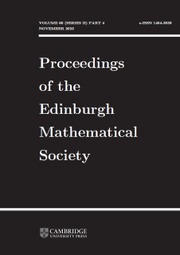No CrossRef data available.
Article contents
All, most, some? On diffeomorphisms of the interval that are distorted and/or conjugate to powers of themselves
Published online by Cambridge University Press: 02 April 2025
Abstract
We study the problem of conjugating a diffeomorphism of the interval to (positive) powers of itself. Although this is always possible for homeomorphisms, the smooth setting is rather interesting. Besides the obvious obstruction given by hyperbolic fixed points, several other aspects need to be considered. As concrete results we show that, in class C1, if we restrict to the (closed) subset of diffeomorphisms having only parabolic fixed points, the set of diffeomorphisms that are conjugate to their powers is dense, but its complement is generic. In higher regularity, however, the complementary set contains an open and dense set. The text is complemented with several remarks and results concerning distortion elements of the group of diffeomorphisms of the interval in several regularities.
MSC classification
Information
- Type
- Research Article
- Information
- Proceedings of the Edinburgh Mathematical Society , Volume 68 , Issue 3 , August 2025 , pp. 909 - 944
- Copyright
- © The Author(s), 2025. Published by Cambridge University Press on Behalf of The Edinburgh Mathematical Society


